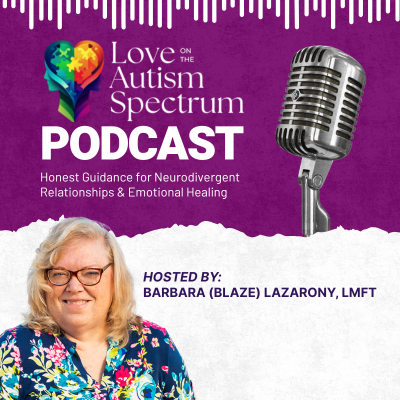Imagine a world where the slightest touch, taste, sound, or even a change in light triggers a whirlwind of overwhelming sensations. For individuals living with Sensory Processing Disorder (SPD), this is their reality—a constant struggle to process and respond to sensory information in a way that feels manageable. Everyday tasks like getting dressed, eating, or being in a crowded space can feel daunting and exhausting. Navigating daily life with SPD is challenging, but increased awareness, understanding, and tailored strategies can significantly improve their quality of life and help them thrive.
In this blog post, we’ll explore the details of SPD and provide valuable insights on recognizing signs, understanding its relationship with other conditions, and finding the most effective treatment approaches.
Key Takeaways
- Sensory Processing Disorder (SPD) is a neurological condition that affects children and adults, impacting everyday life.
- Recognizing the signs of SPD is essential for providing appropriate support, such as occupational therapy techniques and home/school and work accommodations.
- Caregivers should also provide guidance on effective self-regulation techniques to help those affected become more self-sufficient.
Understanding Sensory Processing Disorder
Sensory Processing Disorder, also known as sensory processing difficulties, affects how the brain processes sensory information, leading to over- or under-sensitivity to stimuli. This can significantly impact daily life and activities for individuals who experience it, most commonly diagnosed during childhood. In some cases, SPD can co-occur with other conditions, such as autism spectrum disorder or ADHD, further complicating the picture.
Another critical issue is the SPM is not included in the DSM-5 TR, which means many individuals with SPD are often not formally diagnosed. However, this does not mean that they do not experience the challenges associated with sensory processing difficulties. Caregivers, loved ones, and workplaces must know these challenges and provide the necessary accommodations as much as possible.
Definition and prevalence
SPD is when an individual has difficulty organizing and responding to sensory input, resulting in either over-sensitivity or under-sensitivity to stimuli. It is more commonly seen in children, though adults may also be affected. The two types of sensory processing challenges are oversensitivity (hypersensitivity) and undersensitivity (hyposensitivity).
Sensory-seeking behavior, for instance, refers to the act of seeking additional sensory stimulation. Understanding the prevalence and various manifestations of SPD is necessary for providing suitable support and interventions.
Impacts on everyday life
The effects of SPD on daily life can be profound, influencing social settings, education, and emotional regulation. For example, SPD individuals may have difficulties performing daily living activities, reduced self-confidence, and issues in social interactions and play. These challenges can, in turn, affect overall well-being, life satisfaction, and general functioning.
Learning to cope with sensory processing issues is especially important for children, as they may struggle with emotional regulation, leading to outbursts or shutdowns. Sensory diets involving tailored activities and supports can help regulate emotions and improve overall functioning for individuals with SPD.
Recognizing the Signs of Sensory Processing Disorder
Identifying the signs of SPD represents a key initial step in addressing the disorder. The primary signs include overreacting and underreacting to stimuli and sensory-seeking behaviors. By observing these signs, parents and professionals can better understand the individual’s sensory needs and provide appropriate support.
Overreacting to stimuli
Overreacting to stimuli may involve extreme reactions to sounds, textures, or smells, leading to avoidance behaviors. For instance, individuals with SPD may experience distress or irritation when exposed to loud noises, certain fabrics, or strong odors.
Identifying these triggers and comprehending the individual’s sensory needs helps provide targeted support to alleviate discomfort and enhance quality of life.
Underreacting to stimuli
Conversely, underreacting to stimuli can result in a lack of response to pain, temperature, or other sensory input. This can harm an individual’s safety, as they may not notice or react appropriately to potential environmental dangers.
Comprehending and addressing this aspect of SPD is necessary for the safety and well-being of affected individuals.
Sensory seeking behaviors
A strong desire for sensory stimulation characterizes sensory-seeking behaviors. Individuals with SPD may actively seek out sensory experiences across the five senses, such as:
- Movement
- Lights
- Colors
- Sounds
- Smells
- Tastes
that excite them.
Recognizing and addressing these sensory-seeking behaviors can help individuals with SPD meet their sensory needs safely and appropriately.
Types and Subtypes of Sensory Processing Disorder
Comprehending the various types and subtypes of SPD is necessary to provide targeted support and interventions. These subtypes involve different sensory systems, such as:
- Visual
- Auditory
- Tactile
- Olfactory
- Gustatory
- Vestibular
- Proprioceptive
- Interoceptive
By recognizing the specific subtype affecting an individual, parents, and professionals can better tailor support and interventions to address their unique sensory challenges.
Sensory modulation disorder
Sensory modulation disorder involves difficulty regulating responses to sensory input, which can result in over- or under-sensitivity. This subtype can significantly impact an individual’s sensory processing, leading to daily life and activities challenges.
Comprehending the nuances of sensory modulation disorder can help provide suitable support and interventions to meet the unique needs of those affected.
Sensory discrimination disorder
Sensory discrimination disorder affects the ability to perceive and interpret sensory information accurately. This subtype can make it difficult for individuals with SPD to differentiate between:
- Textures
- Sounds
- Tastes
- Smells
This can lead to challenges in processing and responding appropriately to their environment.
By recognizing the presence of sensory discrimination disorder and sensory integration dysfunction, parents and professionals can provide targeted support and interventions to help individuals better navigate their sensory experiences.
Sensory-based motor disorder
The sensory-based motor disorder impacts motor skills and coordination due to sensory processing challenges. This subtype can hinder an individual’s ability to perform daily tasks and participate in activities that require precise movements, such as playing sports or engaging in hobbies.
Comprehending the impact of sensory-based motor disorder on an individual’s life can aid parents and professionals in providing suitable support and interventions to address their motor and coordination challenges.
The Relationship Between Sensory Processing Disorder and Other Conditions
SPD often co-occurs with other conditions, such as ADHD and autism spectrum disorder. This can make it difficult to differentiate between the various disorders and provide targeted support. However, understanding the unique relationship between SPD and these co-occurring conditions is crucial for ensuring that individuals receive the appropriate treatment and support to address their specific sensory challenges. Understanding the interplay between SPD and other conditions can help parents and professionals provide targeted support and interventions to address the unique needs of affected individuals.
Some people use the terms Sensory Processing Disorder (SPD) and Highly Sensitive Person (HSP) interchangeably, but they are not the same. SPD refers to a neurological condition that affects how the brain processes sensory information, often leading to significant challenges in daily life. On the other hand, being an HSP describes a personality trait where individuals are more sensitive to environmental stimuli, emotions, and sensory input, but it doesn’t necessarily disrupt their ability to function.
Distinctions between related disorders
Recognizing the differences between SPD and related disorders is crucial for providing appropriate treatment and support. For example, while autism spectrum disorder encompasses a range of social, communication, and behavioral difficulties in addition to sensory issues, SPD primarily impacts sensory processing. Understanding these distinctions can help parents and professionals better tailor support and interventions to meet individuals with SPD and co-occurring conditions’ unique needs.
Potential Causes and Risk Factors
The causes of SPD are not yet fully understood, but it is believed that the following factors may contribute to the development of the disorder:
- Genetic predisposition
- Birth complications
- Environmental influences
- Presence of co-occurring conditions
Recent studies have indicated that there may be genetic influences on sensory processing disorders, potentially including shared genetic factors with autism spectrum disorder (ASD). However, the precise genetic sources of SPD are still being investigated.
Birth complications such as prematurity, birth injury, and prenatal or perinatal complications may also be linked to SPD. Environmental factors, such as variations in sensory processing and low tolerance for tasks, may further contribute to the development of the disorder.
Comprehending SPD’s potential causes and risk factors is key for early intervention and targeted support.
Diagnosing Sensory Processing Disorder
Diagnosing SPD can be a complex process, often involving the expertise of occupational therapists who can evaluate a child’s behavior and sensory processing through assessments and observations. During the Adult Autism Spectrum Assessments I offer, I used the SPM-2, which measures sensory processing across eight different areas: social participation, vision, hearing, touch, body awareness, balance and motion, planning and ideas for action, and regulation.
Challenges in diagnosis
Diagnosing SPD can be complicated by co-occurring conditions and the varying symptoms affected individuals exhibit. Again, SPD is not yet recognized as an official diagnosis in the Diagnostic and Statistical Manual of Mental Disorders, 5th Edition (DSM-5), which can make navigating insurance coverage and treatment options challenging.
Despite these challenges, identifying the signs of SPD and seeking professional help are vital for addressing the disorder and enhancing the quality of life for those affected.
Treatment Approaches for Sensory Processing Disorder
A variety of treatment approaches are available for individuals with SPD, with occupational therapy being one of the most effective and commonly used modalities. Occupational therapy addresses sensory input and helps individuals respond to and manage sensory challenges, improving their overall functioning and quality of life.
Occupational therapy techniques
Occupational therapy techniques for SPD include:
- Speech therapy
- ABA (behavior) therapy
- Developmental therapy
- Physical therapy
In addition, enjoyable and stimulating activities can challenge the senses without causing sensory overload or excessive stress.
Neourdiverse Therapists and Coaches’ therapy options
Therapists and coaches who specialize in working with neurodiverse individuals offer a range of therapy options for individuals with SPD or on the autism spectrum. These therapies often focus on developing social skills, enhancing communication, and promoting self-regulation techniques.
Working closely with a qualified therapist or coach is essential to identifying the most effective treatment approach tailored to each individual’s unique needs. Sensory processing disorder can look very different from person to person, with some experiencing hypersensitivity to stimuli while others may struggle with under-responsiveness.
As a Neurodivergent Therapist and Coach, I specialize in working with adults to assess, understand, and navigate sensory processing challenges. My goal is to provide personalized strategies and support, helping clients better manage their experiences and improve their daily lives. Together, we work toward building greater awareness and creating environments and routines that align with their sensory needs.
Sensory integration therapy effectiveness
Sensory integration therapy combines occupational and physical therapy techniques to address SPD, but its effectiveness is still being researched. Occupational therapists often incorporate sensory integration therapy into their treatment plans for individuals with SPD, offering a comprehensive approach to addressing sensory challenges. However, more research is needed to fully understand the effectiveness of this therapy in improving sensory processing and overall functioning.
Creating a sensory diet
A sensory diet is a tailored list of sensory activities and supports designed to help individuals with SPD self-regulate and satisfy their sensory needs. Working with an occupational therapist, caregivers can develop a sensory diet that includes deep pressure, joint compression, and proprioceptive activities. This aids individuals with SPD in learning self-regulation techniques and managing their sensory challenges.
Supporting Individuals with Sensory Processing Disorder
Supporting individuals with SPD involves:
- Understanding their unique sensory needs
- Providing appropriate accommodations and interventions
- Collaborating with occupational therapists and other professionals
- Ensuring that individuals with SPD receive the necessary support to manage their sensory challenges
- Improving their overall quality of life
Home and school accommodations
Providing accommodations at home and school can help individuals with SPD feel more comfortable and supported. Standard home accommodations may include creating a sensory-friendly environment, providing a designated quiet space, and utilizing sensory-friendly furniture and materials.
In a school setting, accommodations may include providing a quiet workspace or ‘calm down’ area, seating the student away from doors, windows, or buzzing lights, and offering access to sensory tools.
Work accommodations
Accommodations can be made for adults with Sensory Processing Disorder (SPD) in the workforce to help them better manage sensory challenges and thrive in their roles. These accommodations can include providing noise-canceling headphones to reduce auditory distractions in noisy environments, creating a quiet workspace to minimize sensory overload, or offering a flexible work schedule to allow for necessary breaks.
Employers can also consider adjusting lighting, reducing strong scents in the office, or allowing remote work options to create a more sensory-friendly workplace. These small but impactful changes can significantly affect an employee’s ability to perform effectively and feel comfortable in their work environment.
Encouraging self-regulation
Encouraging self-regulation techniques can empower individuals with Sensory Processing Disorder (SPD) to manage their sensory challenges more effectively and independently. These techniques provide tools to help individuals recognize and respond to their sensory needs healthily.
Some of the most beneficial self-regulation methods include mindfulness-based meditation, which encourages a calm awareness of the present moment; deep breathing exercises, which help reduce stress and promote relaxation; progressive muscle relaxation, which involves tensing and relaxing different muscle groups to release physical tension; and guided imagery, a mental exercise that uses visualization to create calming and positive sensory experiences. By consistently practicing these strategies, individuals with SPD can develop better-coping mechanisms, navigate their sensory experiences with more control, and significantly improve their overall well-being and quality of life.
Navigating Insurance and Financial Concerns
Navigating insurance coverage for SPD treatment can be difficult due to the lack of official diagnosis recognition. However, understanding available options and working closely with healthcare professionals can help alleviate financial concerns.
Seeking guidance from insurance providers and exploring alternative funding sources enables families to ensure their loved ones receive the necessary support and treatment for SPD.
Summary
Throughout this comprehensive guide, we have delved into the complexities of Sensory Processing Disorder (SPD), shedding light on everything from its causes and symptoms to the various treatment approaches and accommodations available. SPD affects how individuals process and respond to sensory information, significantly impacting their daily lives, relationships, and overall well-being. By understanding the unique challenges faced by those with SPD, caregivers, educators, and professionals can work collaboratively to provide personalized support and interventions. These efforts may include therapy, sensory integration techniques, and creating sensory-friendly environments to help individuals navigate their world more comfortably.
Raising awareness of SPD is crucial in fostering empathy and reducing stigmas, ensuring those affected feel seen, understood, and supported. Together, we can continue championing greater understanding and advocating for resources that improve the quality of life for individuals with SPD. Let’s commit to walking alongside them toward a brighter, sensory-balanced future where they can thrive and reach their full potential.
Frequently Asked Questions
What are the signs of sensory processing disorder?
Signs of sensory processing disorder include feeling that clothing is too scratchy or itchy, lights seem too bright, sounds seem too loud, soft touches, thinking too hard, gagging on food textures, poor balance, and fear of playing on the swings.
What are the four types of sensory processing disorders?
Sensory processing disorder (SPD) comprises four patterns: low registration, sensation seeking, sensory sensitivity, and sensation avoiding.
What are sensory meltdown symptoms?
Sensory meltdowns can involve crying, screaming, hitting, kicking, or withdrawing. It is essential to recognize these as requests for help rather than “bad behavior.”
What is SPD?
Sensory processing disorder (SPD) is a condition that affects how the brain processes sensory information from sight, sound, smell, taste, and touch. It may lead to being overly sensitive to stimuli, making it difficult for some to interpret their environment.







